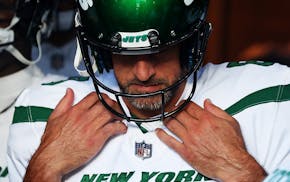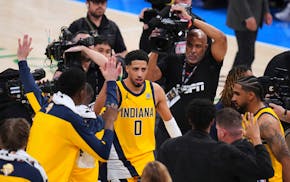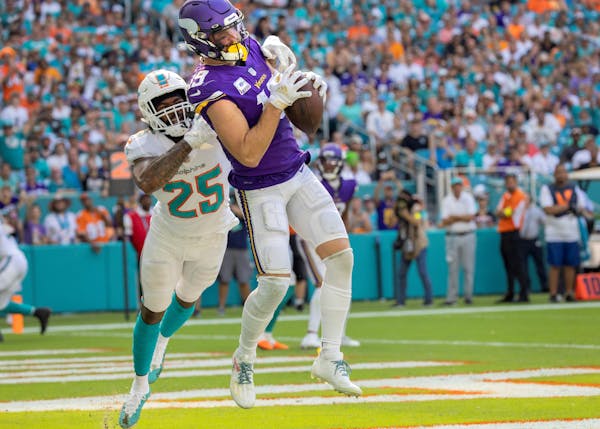The Vikings head into their bye week with a 5-1 record and enjoy the distinction of being the only NFL team with a two-game division lead through six weeks. They will play one more game — at home against the 2-4 Cardinals — before the NFL trade deadline on Nov. 1. No matter what happens between now and then, the Vikings are guaranteed to be atop the NFC North when the deadline hits.
Which leads us to our big Vikings question of the week: If they wanted to add to their roster at the trade deadline, could they afford to do it?
The answer, for the moment, is no. But the Vikings might have a few options to change that.
According to NFL Players Association salary data, the Vikings and Chiefs are the only teams with less than $1 million in cap space; the union's current figures put the Vikings with $147,868 in open space, while Over the Cap calculates the number to be around $655,000. The other trick for the Vikings is their 2023 cap; they've already got more than $221 million in cap costs scheduled for next year. That number figures to drop with roster moves or restructures for a few veterans after the season, but assuming a 2023 cap around $225 million, the Vikings still aren't likely to have a reserve of open cap space.
The simplest maneuver for them to create more space between now and Nov. 1 would be to convert a veteran player's base salary to a signing bonus, which the Vikings could spread out over the final years of the player's deal. This can be accomplished simply by notifying the player with a letter, and could make sense for a player like right tackle Brian O'Neill, who turned 27 last month, has allowed only three sacks since the beginning of 2021 and has $26 million guaranteed through 2024. O'Neill isn't going anywhere in the near future, and the Vikings could clear up to $3.3 million in cap space by converting O'Neill's base to a signing bonus, pushing just over $800,000 into each of the next four years.
If the Vikings wanted to clear space through an extension, one idea could involve a player on the other side of the ball.
Defensive lineman Dalvin Tomlinson has been a bright spot for the Vikings defense in his shift from a 4-3 tackle to a 3-4 end this year. The former state high school wrestling champion has used the balance and hand-fighting skills that former defensive coordinator Andre Patterson saw in him; his career high for pressures in a season is 28, per Pro Football Focus, but he already has 15 this year.
When the Vikings signed Tomlinson last year, they gave him a two-year deal that included void years from 2023-25 to deal with his $12.5 million signing bonus. At the moment, the 28-year-old Tomlinson is set to be a free agent after the season, while the Vikings carry $7.5 million in dead money for him next year. If they were to instead sign him to an extension, they could spread the previous signing bonus charges over the life of the new deal and possibly lower his cap numbers for both 2022 and 2023.
To this point, the Vikings have fulfilled the "super-competitive" expectation for the 2022 season co-owner Mark Wilf stated when the team fired Rick Spielman and Mike Zimmer on Jan. 10. They've done it in ways that suggest they still need to improve, but they still have six home games and four matchups with losing teams after the bye. A return to the playoffs for the first time since 2019 seems like a reasonable possibility.
The Vikings aren't likely to mortgage their future to help themselves get there, but if they decided to clear space in time for a deal at the end of the month, they have some reasonable ways to do it.
Do you have a big question about the Vikings? Email it to Ben Goessling, Andrew Krammer or Michael Rand, or tweet it to @AccessVikings and listen for answers on the Access Vikings podcast.

Softball state tournament: Champlin Park completes run to Class 4A title

Twins call up pitching prospect Travis Adams to bullpen

RandBall: Aaron Rodgers made up his mind, and not a minute too soon


